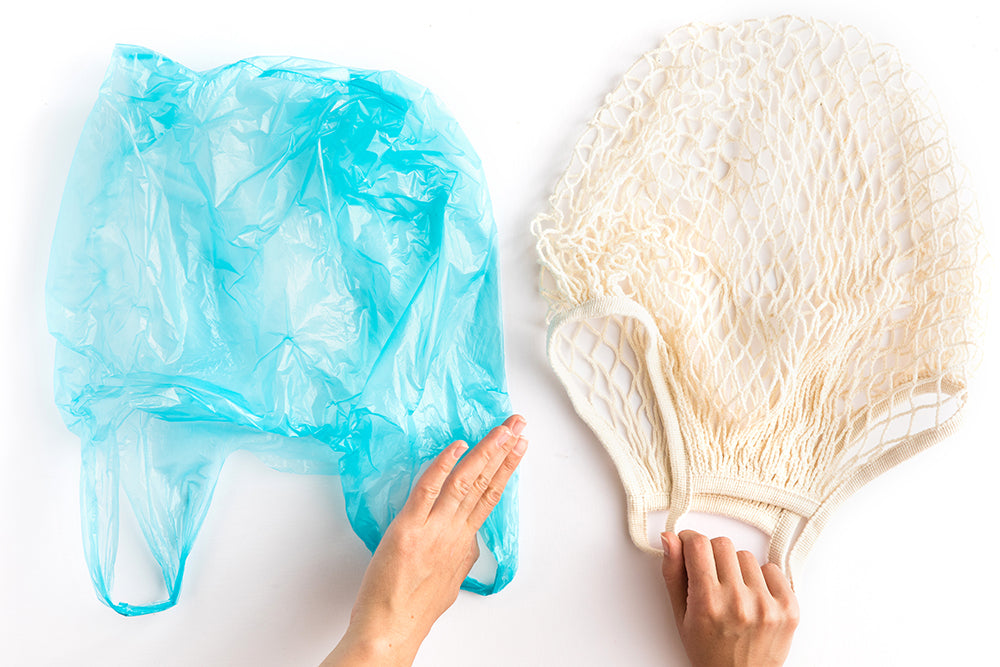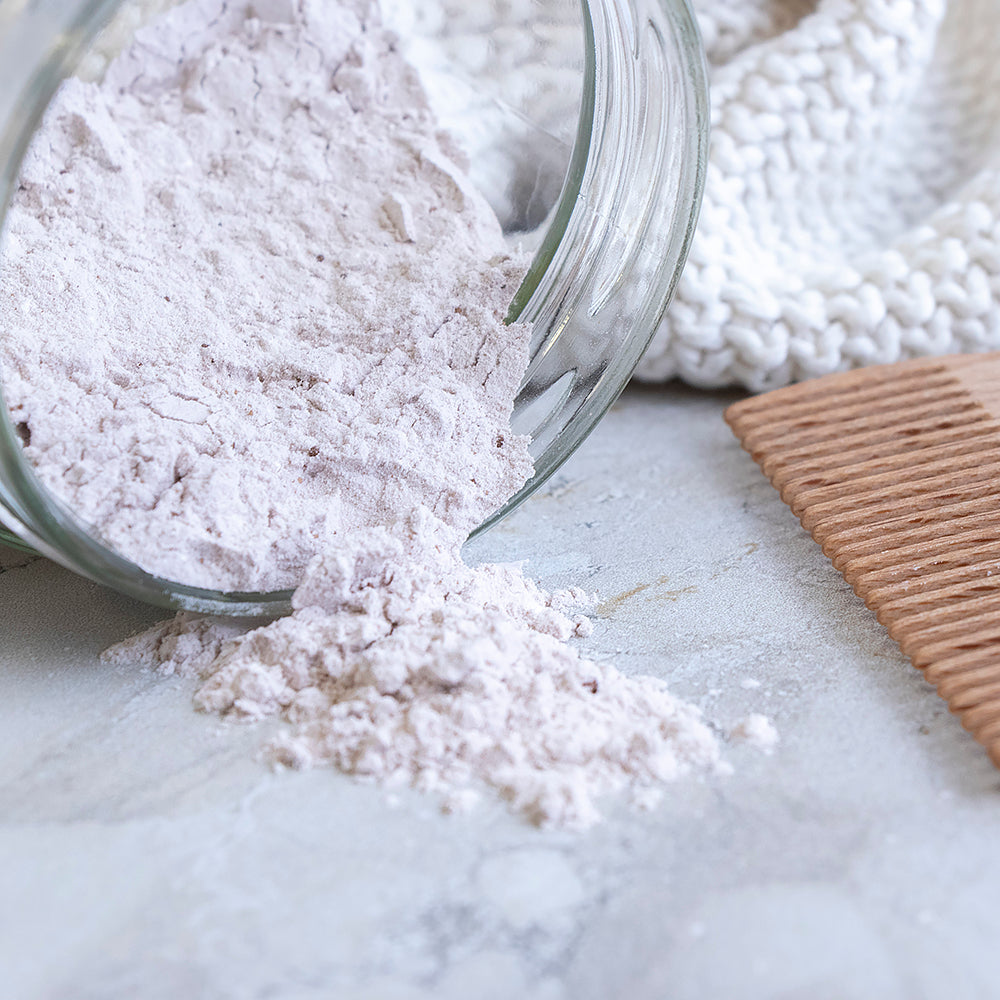
We break down the surprising science
We all celebrated when plastic bags were banned, first from supermarkets, then across New Zealand. Good. No more turtles eating plastic bag ‘jellyfish’, sharks swimming through great swathes of floating plastic, or whales washing up on shore with stomachs full of plastic.
The reality? Not quite what we hoped. The supermarkets turned this in their favour, by manufacturing millions of slightly thicker plastic bags, slapping a ‘reusable’ label on them and selling them for 10c. Nice new revenue stream you’ve got there, guys. The absolute worst choice you can make is buying these reusable bags every time you shop. Most reusable bags are made of mixed materials, which makes them very difficult (or impossible) to recycle. They also require more energy and material to produce than a single-use plastic bag, and generally won’t last as long as a bag made of, say, jute or cotton.
Now there are millions of reusable bags available, in all materials imaginable; some with self-congratulatory wee slogans and others with jazzy little patterns So, we’re all left wondering which is the best bag for the environment?
In short: the best bag is the one you already own.
Second-best is the bag you will own, and can actually reuse for years.

What makes the ideal reusable bag?
Right, you are committed and you are going to reuse your bag. Which is the best material to go for?
I am basing this article on the many studies done around the world on bag materials. They all vary, so I am basing my summary on the most conservative estimates.
I’ve also factored in the entire lifecycle of the material, from raw material source, through manufacture, to end of life. Each bag is rated against how many times you’d need to reuse it to outweigh the resources needed to make it. The other side of the equation, of course, is how long it will last with regular use and where your bag is likely to go at the end of its life. The results might surprise you.

I’ve narrowed it down to eight materials:
- Paper
- LDPE (found in ‘reusable’ plastic bags)
- Hemp
- Jute
- Cotton
- Polypropylene
- Recycled plastics (mixed)
- Biodegradable plastic
But first – a caveat. Remember that the best bag is one you already own, so don’t read this list and head home to throw away all of the low-scoring ones. Use your bags, care for them, make them last as long as possible, then think about how best to replace them.
Paper bags
We cut down trees to make paper bags. In the USA alone, that’s 14 million trees just to make that a year’s worth of paper bags - around 10 billion.
Paper bag manufacturing is more resource-intensive than plastic bag production. Most manufacturing plants use more water in the paper-making process than when making plastic. Paper bags are also bigger and bulkier, so they produce more solid waste and have a larger landfill footprint.
But paper is compostable, and trees are renewable, so that outweighs the negatives. Doesn’t it?
Some paper bags aren’t compostable, because to make them last a little longer or be a little stronger, they have wax or oil-based coatings. This makes them non-compostable and often non-recyclable.
And the worst part?
Paper bags don’t last. On average, you will get three uses out of a paper bag before it tears. So they are more resource intensive, yet not as reusable. Sure, they don’t choke turtles, but they do contribute to deforestation, have a high carbon footprint and pollute lots of water.
Thumbs down for paper bags.
Number of uses needed to make paper bags better than plastic: 43 (good luck with that).
Overall rating: 2/10
LDPE - Low density polyethylene bags
Plastic bags are primarily made out of polyethylene; either high density (HDPE) which is your typical single use plastic bag, or low density (LDPE) which is your fancier, ‘reusable’ plastic bag. Both are derived from petroleum, so that’s a black mark straight off the bat, because resource extraction is one of the least environmentally friendly practises around.
LDPE bags are the thick ones supermarkets are selling now, as a reusable option. The biggest issue is that people still treat them as disposable. What a terrible step in the wrong direction!
They don’t ever biodegrade, but instead break up into microplastics, which are now found everywhere on earth. They can’t really be recycled, so head either for landfills or our oceans, where they strangle turtles and seabirds.
How many uses: 4. But this only reflects the extra energy needed to make the bags, versus the original thinner plastic bags. It also doesn’t take into account the fact that they won’t be recycled (statistically speaking), and the potential harm they may do to our planet and wildlife.
Overall rating: 3/10
Hemp bags
Not a week goes by on the Ethique Facebook page without someone praising hemp as the solution to all our environmental woes. Putting aside the irrelevant THC issue (hemp contains a negligible amount of the stuff), hemp is not here to save the day… yet.
Hemp plastic is not a substitute for petroleum products – it just doesn’t perform the same way. Even if we made plastic bottles from hemp, it certainly doesn’t make them biodegradable - they’re still plastic. Then we would just have hemp-based plastic bottles bobbing about in our ocean.
So does hemp make a good bag?
Yes, in its natural form, hemp is tough, hardwearing and can be grown with fewer pesticides and fertilisers than other natural fibres. It’s very efficient in terms of land and water, producing more plant matter than most other plants would in the same environment.
Hemp also has some antifungal and antimicrobial properties, which lessens the chance of your reusable bag giving you food poisoning (wash your bags people!)
The biggest problem with hemp bags is that they’re very hard to find for legal reasons. Hopefully this will change.
How many uses: 4.
Overall rating: 9/10 (one point less because they’re very hard to find.)
Jute bags
Jute is much like hemp, but without the legal issues. The second most abundant fibre on earth, jute is robust, efficient to grow, doesn’t require vast amounts of water or pesticides, and takes minimal processing to make it into a usable fibre.
How many uses: 4
Overall rating: 10/10
Cotton bags
Studies show you have to use a cotton bag over 131 times to break even with the humble plastic HDPE bag (like you’d find in old-school single-use supermarket plastic bags). That’s because growing cotton uses insane amounts of water and pesticides, and a lot of cotton manufacturers have hideous environmental practices.
Interestingly enough, some studies have shown that organic cotton could be worse for the environment, due to the pesticides used (yes, organic farming does use them) and additional land required. Some cotton is grown using recycled water and environmentally friendly farming practices, though this is hard to come by.
How many uses: 131+
Overall rating: 3/10 (organic, using responsible water practises: 4/10)
Polypropylene (PP)
Most of your supermarket ‘reusable’ bags are made of nonwoven PP- not the thicker plastic-y bags, but the ones that feel a little like fabric.
This is another extracted resource, but polypropylene is at least readily recyclable. I don’t get too excited about that of course, because at the end of the day, recycling just isn’t happening around the world. And it is not yet possible to make bags out of 100% recycled PP, so all bags made from this material are made of virgin plastic. Another black mark.
How many uses: 11 (this only takes in the energy required and carbon emitted in comparison to a standard single use plastic bag and not the end-of-use issues that all plastic has.)
Overall rating: 3/10
Recycled plastic bags
Recycled plastic bags are made out of discarded bottles, other bags and reclaimed plastic in general. It’s often a mix, so these bags can be made from 100% recycled plastic with no need to introduce virgin plastics.
Obviously there is energy required to recycle and process the plastic back into a bag and it can’t be recycled or compostable at the end of its life. But boy, do these last. They’re also lightweight and the bags that most people successfully reuse - because they’re most convenient.
How many uses: Depends on many factors.
Overall rating: 4/10
Biodegradable plastic
Short and sweet - they don’t seem to biodegrade and the materials they are made from vary. Councils hate them so they won’t collect them and they head straight to landfill. They also let people get away with thinking they’ve solved the issue, so they can continue merrily using disposable plastic, rather than tweaking their lifestyle.
Overall rating: 0/10.
The winner: jute
The perfect reusable bag… doesn’t exist.
Every choice comes with a downside or two, as do almost all our choices throughout life. But without doubt, the best choice is jute bags. They have the least resource-intensive input, the longest useful life span, and the plants also help with soil health and prevent erosion. Unlike hemp they are easy(ish) to find. Brands don’t like them, however, as they aren’t as pretty as cotton and they are bulkier than other materials.
Paper - probably surprisingly - is the worst option (alongside ‘biodegradable’ options). Sure, it might be compostable (as long as it’s not waxed or coated) but you have no idea where it was made and from what forestry. It also won’t last.
But again, nothing is sustainable if you buy more of them than you need. Buy a few and reuse them until they are hole-y and useless. Then, and only then, dispose of them responsibly.
Sustainability is simple: only buy what you need.
Sources:
-
Lober, D. (2020, June 19). The Truth About Paper Bags. Retrieved July 11, 2019, from reusethisbag.com
-
Crittenden-5, G. (2013, March 05). Facts about paper bags and trees. Retrieved July 11, 2019, from solidwastemag.com
-
Conversation, T., Forrester, R., Palmer-Derrien, S., Raftery, A., & Elmas, M. (2018, August 08). Plastic bag ban: Here's how many times you actually need to reuse your shopping bags. Retrieved July 11, 2019, from smartcompany.com.au
-
Plastic bag bans: How the alternatives stack up. (2018, June 20). Retrieved July 11, 2019, from abc.net.au
-
Yonavjak, L. (2013, August 09). Industrial Hemp: A Win-Win For The Economy And The Environment. Retrieved July 11, 2019, from forbes.com
-
Material Guide: How Sustainable is Hemp? (2020, May 13). Retrieved July 11, 2019, from goodonyou.eco
-
Magazine, S. (n.d.). Paper, Plastic or Reusable? Retrieved July 11, 2019, from stanfordmag.org
-
Czinski, R. (2009, February 11). Paper or plastic shopping bags? Retrieved July 11, 2019, from simpleecology.com
-
Wood, T. (n.d.). Paper or Plastic? Neither! Retrieved July 11, 2019, from forestecologynetwork.org

 Impact
Impact Blog
Blog Store Locator
Store Locator


